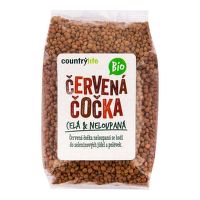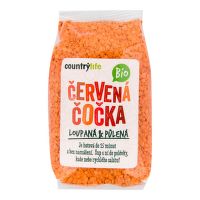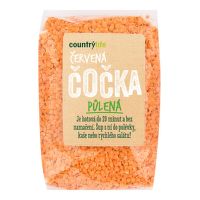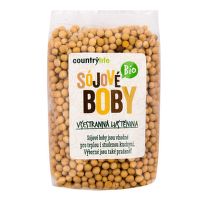Description
Use:
- Side dish - combine the cooked mungo beans with roasted onion and garlic or herbs
- Salad - cooked and cooled mungo beans taste great when combined with fresh vegetables, they can also be combined with rice, grated apple and a carrot and you can season it all with honey, sesame oil, parsley, apple vinegar, nutmeg and herb salt
- Soups - just add vegetables when cooking mungo beans, you can use carrots or onions and season the soup at the end of cooking
- Risotto - you can enrich a classic risotto with mungo beans
- Rissoles - combine grated and roasted carrot and onion with garlic, egg, cooked quinoa and cooked mungo beans, blend it all, season with salt, form the shape of rissoles and bake at 200 °C for 30 minutes
- Soup - fry a shallot and garlic with a turmeric, cumin, grounded cinnamon and chilli, pour broth and add mungo beans, cook until soft, season with salt, lemon juice and fresh coriander
Pinto beans must be pre-soaked for at least two hours before the use. Use fresh water for cooking the beans in order to prevent flatulence. Season the mungo beans with salt after having been cooked, otherwise they get hard in the water.
Mungo beans are seeds of a plant called vigna. Vigna comes from India and today, it is grown there as well as in China or Thailand. In China, mungo beans have been known since 3000 BC. Vigna is a bush plant usually not higher than a meter, and its beans are hidden in pods. It can even be grown in the Czech Republic as well.
This product will be appreciated primarily by consumers with an interest in organic farming and a sustainable farming system. Organic food always goes through a system of checks and certifications that ensures their quality and enables them to bear this designation.
Composition
Mungo beans*. May contain traces of gluten, peanuts, soy, nuts and sesame. *product of controlled organic farming.Storage
Store at a relative humidity up to 70%.
























